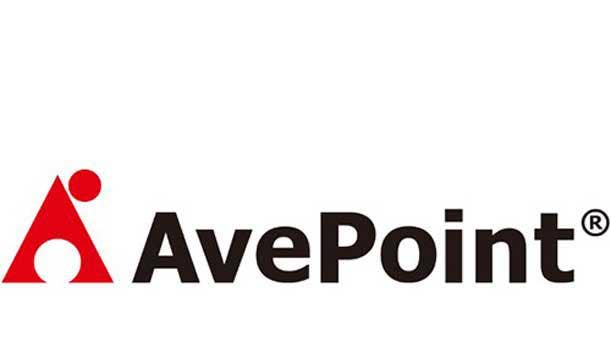AvePoint CEO Jiang: IPO Brings Scale, Accelerates Mission To Becoming ‘100 Percent Channel’
‘We only have only 7 million cloud users. … Going from 7 million to what we want to get to, which is 50 million cloud users, will allow us to get to over $1 billion recurring revenue annually. So that’s what we’re very, very excited about, and that’s what becoming a public company allows us to do, to move faster,’ AvePoint CEO Tianyi ’TJ’ Jiang tells CRN.

AvePoint Takes Advantage Of SPAC For Its IPO
AvePoint, which bills itself as the largest provider of data management technology for the Microsoft 365 market, on July 2 completed its IPO via a merger with Burlingame, Calif.-based Apex, a special purpose acquisition company, or SPAC. Its IPO opened the day at $12.05 per share and closed at $11.95 per share, down from Apex’s mid-January high of $16.95. This was the first data protection and data management technology developer to go public in some time.
AvePoint is unusual in that it went public as a profitable company. Founded in 2001 as a provider of backup technology for Microsoft Exchange, the company has since become a major provider of SaaS technology for a wide swath of the Microsoft environment with 2020 revenue of $152 million, of which 75 percent is recurring revenue. The company estimates 2021 revenue to reach $194 million, of which over 80 percent will be recurring.
Dr. Tianyi “TJ” Jiang, CEO of AvePoint, spoke with CRN to discuss the role AvePoint plays in the Microsoft channel and the role the channel plays in AvePoint. He said all of the company’s SMB business is indirect, with enterprise business eventually slated to be nearly all indirect soon.
“We look at the best public software companies like Microsoft, for example,” he said. “They are 100 percent channel, right? I think that’s the end game. That’s the way to scale, to provide truly differentiated offerings through distribution partners, through service partners and value-added resellers, to provide channels. So I think the momentum is toward 100 percent channel.”
Jiang also discussed why AvePoint went the SPAC route to an IPO, noting that the merger with Apex gave it a board of directors experienced with operations management and acquisitions.
“It went well for us,” he said. “We still stick by our decision. [And] once you’re public, it doesn’t matter how you go public. It’s the performance of the company that earns credibility with investors.”

How do you describe AvePoint?
AvePoint is the largest Microsoft 365 data management solution provider. We’ve been around for 20 years. We are known to solve some of the hardest collaboration challenges that enterprises face. The simpler way to think about it: Our SaaS solutions are used to help enterprises manage, migrate and protect their data in Microsoft 365, which is their Office cloud platform with multiple workloads such as email, OneDrive file share, Teams, SharePoint, Projects, Yammer, everything on the Microsoft 365 cloud platform.
We’re a SaaS or software provider. Managed service providers use our software to manage data for hundreds of small to medium businesses because small to medium businesses don’t have IT. So they rely on services from our MSPs to run IT infrastructure for them. So in the channel space, our buyer, our customer, our user, are actually MSPs.
Does AvePoint work exclusively through MSPs?
Our genesis was doing direct sales because historically we started in the SharePoint space, and SharePoint is used by large enterprises. It’s Microsoft’s enterprise content platform. But in 2011 we invested very aggressively and early into Microsoft Cloud, then called BPOS [Business Productivity Online Suite]. And we correctly forecast that SharePoint would be the middleware, the infrastructure platform, if you will, for the entirety of Microsoft Office in the cloud. Fast forward to today, that’s the case. Also in Teams, for example, if you want to change any documents, you have to go through SharePoint. So because of that, and since we have first-mover foresight to go into Software as a Service--we update our software every two weeks, DevOps, continuous integration and continuous deployment—we actually see SMBs coming to us, MSPs coming to us, to use our enterprise-grade SaaS solution for small to medium businesses.
So all of a sudden we realized that our solution, while it targeted large enterprises—they are more regulated, are multinational, they need data management and governance and security—small businesses have the same needs. But because we had SaaS, small businesses were also coming to us. So in the last two years we have seen MSPs really take a liking to and flock to our solution. And we have seen high three-digit growth in that segment. So we have gone from only covering enterprises with a direct sales organization to now also covering SMBs through the channel by selling directly to MSPs.

Does AvePoint still work directly with enterprise customers, or is there a channel strategy there?
We are actually going to roll out a global channel campaign program come mid-July. There’ll be more detail. It’s quite comprehensive. It covers the entire spectrum of all the market segments that we cover from SMB—we sell through 100 digital marketplaces around the world through the likes of Ingram Micro, Tech Data, Synnex, [Australia-based] Rhipe, etc.—to midmarket to enterprise customers by working with VARs as well as system integrators that provide services leveraging our software.
Ca n you see a time where AvePoint might focus exclusively on indirect channels?
That’s the way we going. We look at the best public software companies like Microsoft, for example. They are 100 percent channel, right? I think that’s the end game. That’s the way to scale, to provide truly differentiated offerings through distribution partners, through service partners and value-added resellers, to provide channels. So I think the momentum is towards 100 percent channel.

AvePoint has just done an IPO. What’s the goal?
It will allow us to scale our business and invest in the channel even more. We’re one of those rare SaaS, high-growth, but profitable, companies out there. There’s only seven other public companies like us trading on Wall Street today that have at least $150 million in revenue and at least 25 percent year-over-year growth, and that has at least 10 percent EBITDA profit margins. So that makes us quite unique. [We] have about $258 million cash on the balance sheet with no debt. So obviously we’re going to put that to work quickly with organic growth, with investing in the channel, and also do strategic acquisitions and strategic moves.
So why do an IPO now?
It’s a great market for tech. Especially when you look at what COVID has brought to enterprises. They have to go to cloud just to continue to survive. So every business has to be a technology business. This massive wave of digital transformation has been accelerated in a big way by the pandemic. And the market in front of us is massive. We talk about a total addressable market of $33 billion just in 2022. We have a first-mover advantage. We have a platform advantage. We have been doing enterprise SaaS for the last nine years. We’re in 12 global Azure data centers, including the FedRAMP-certified government data center. As customers and government agencies and regulated industries race towards the cloud, it’s the best time for us to become a public company to leverage the capital markets to grow even faster.
[As a public company], we’re visible, we’re transparent to everything, but we also have access to capital markets. One of the things that people don’t know about us is that we built this company with just $60 million primary capital, $60 million, no debt. And now we’re going out of the gate with at least a $2 billion market valuation. So we have been very, very capital-efficient. Of course, the market’s so big. We have a first-mover advantage. We want to grow faster. We want to scale faster. We want to go grab market share. We only have only 7 million cloud users. Twenty-five percent of the Fortune 500 are our customers. Going from 7 million to what we want to get to, which is 50 million cloud users, will allow us to get to over $1 billion recurring revenue annually. So that’s what we’re very, very excited about, and that’s what becoming a public company allows us to do, to move faster.

How important is recurring revenue for AvePoint?
Right now, 80 percent of our revenue in software and 20 percent of services come from the enterprise deployment services and the direct sales nature of our business, but that service already in the next couple of years will go down to 10 percent of the mix. [And] once we go to 100 percent channel, that’ll be even a smaller slice. That allows us to improve our total margins from the mid-70s to the mid-80s by removing the service component. The vast majority of our software revenue already is recurring, so our ARR [annual recurring revenue] this year is going to be well over $150 million. ... It’s a much stronger business because going into any new year, well over 70 percent of our revenue is already spoken for. So that’s the beauty of recurring, predictable, SaaS business.
You want to get rid of the services part of your business. Does that mean you're going to be pushing all the services to your channel partners?
That’s correct. That’s right. We’re offloading a lot more services to the channel partners.
What kind of services opportunities can channel partners look forward to?
There’s immediate consulting services to help customers. We do migrate, manage and protect. We’ve been around for a long time. So we understand all of the enterprise content management platforms under the sun, whether it’s OpenText, Notes, Documentum, HP Trim, FileNet. We have software that partners can use to help migrate their customers onto the cloud. From there, they can do managed services, which means monthly recurring revenue for our partners, where they leverage our software to manage hundreds of Office 365 tenants from a single pane of glass, from a collaboration, security and governance perspective. That also includes SaaS backup. Today, our software is being used to back up petabytes or tens of petabytes of data on a daily basis. [And] the best response against ransomware is to have a good third-party backup solution that has segregated storage locations. So those are things that, as an MSP, as a partner, they can use to provide peace of mind protection for their customers. Not only from a governance and security perspective, but also ransomware recovery. And our platform around data management and life-cycle management also offers records management, compliance, privacy, the sunsetting of data. So there are continuous service opportunities for our partners.

And what does AvePoint offer in terms of preventing ransomware attackson customers’ data?
It’s a multilayer approach. We start with SaaS backup. We back up everything under the sun for Microsoft 365 so customers can restore at the item level, full fidelity, any time they want. We even have a chatbot so the end user can do restores without bothering IT. It’s just a matter of a few minutes chatting with a chatbot with the languages that Azure cognitive services already support. But we also have a governance solution. During the pandemic, we released a new product called Policies & Insights that allows customers and MSPs to discover what’s at risk in the Microsoft 365 environment, if there’s too much over-sharing or over-access, and what should be retired, what should be permissioned, and what should be limited from a data asset management perspective. The proper governance framework will also have a governance solution for Teams that allows companies to automatically clean up chats and channels and shared content so that, with the right permissioning, so you can limit access to your cloud data.
You’ve talked a lot about your relationship with Microsoft and particularly Office 365. How about other cloud platforms?
We’re already multi-cloud. We follow the customer. Most customers today are multi-cloud. So we already have a product for Google Workspace. We have SaaS backup for Salesforce. And we can also already support Box and Dropbox. Customers today are multi-cloud. They may use Microsoft 365 for their office work, for their email, but they could be using Box or Dropbox file share, they could be using Salesforce for CRM, and even AWS for compute. So we’ll continue to roll out support for multi-cloud platforms.

Why did AvePoint use a SPAC to do its IPO?
We were going down the traditional IPO route and then we met Apex Co-CEOs Jeff Epstein and Brad Koenig. Jeff is an ex-Oracle [chief financial officer], who’s now a board member of Twilio. And Brad Koenig was the person who made Goldman Sachs’ technology banking what it is today. Both gentlemen will be on our board, and they bring with them capital market experience as well as operation experience for public companies. When Jeff was at Oracle, they were buying a company every month. So it’s another way to organically expand our footprint to increase our dollar value retention.
What was your experience with the SPAC? There's a lot of confusion out there about what a SPAC is and how it works compared to traditional IPOs.
We actually were going down the traditional IPO route. This was toward the end of last year. And then we checked out SPACs. So it happened that Apex, which is the SPAC we merged into, was one of the best tech SPACs because of the successful track record of both Jeff [Epstein] and Brad [Koenig]. And also when you do a SPAC, it’s actually faster in terms of determining your market capitalization and the total amount of capital you want to raise. So that was already sorted and negotiated within a matter of a month...
This year, there was regulatory scrutiny on the number of SPACs that went out that were not revenue-generating or didn’t have the possibility of revenue generation. There’s been a lot of articles talking about how AvePoint is a great company. Don’t throw the baby out with the bath water. We welcome additional regulations in looking at better educating investors as well as making the SPAC sponsors do a proper allocation of warrants and the instruments. It went well for us. We still stick by our decision. [And] once you’re public, it doesn’t matter how you go public. It’s the performance of the company that earns credibility with investors.